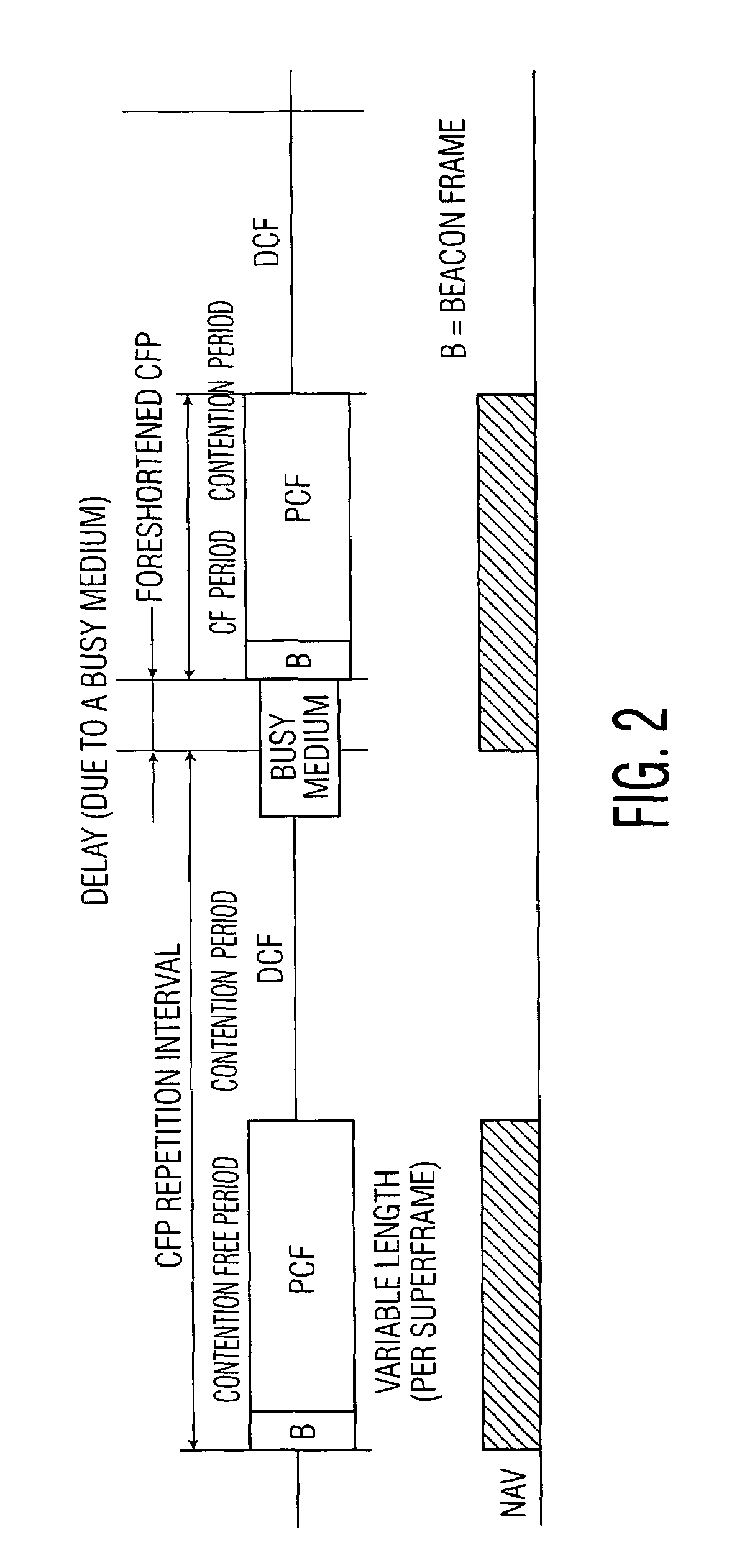Overlapping network allocation vector (ONAV) for avoiding collision in the IEEE 802.11 WLAN operating under HCF
a network allocation vector and ieee 802.11 wlan technology, applied in the field of wireless access control (mac) protocol, can solve the problems of difficulty in supporting the required quality of service (qos), collisions, etc., and achieve the effect of efficient utilization of bandwidth in a wireless lan by avoiding collisions with stations (stas) from different locations
- Summary
- Abstract
- Description
- Claims
- Application Information
AI Technical Summary
Benefits of technology
Problems solved by technology
Method used
Image
Examples
Embodiment Construction
[0022]In the following description, for purposes of explanation rather than limitation, specific details are set forth such as the particular architecture, interfaces, techniques, etc., in order to provide a thorough understanding of the present invention. For purposes of simplicity and clarity, detailed descriptions of well-known devices, circuits, and methods are omitted so as not to obscure the description of the present invention with unnecessary detail.
[0023]To help understand the invention, the following definitions are used:
[0024]A “Distributed Coordination function (DCF)” is a class of coordination functions where the same coordination function logic is active in every station in the BSS whenever the network is in operation.
[0025]A “Point coordination function (PCF)” is a class of possible coordination functions where the coordination function logic is active in only one station in a BSS at any given time that the network is in operation.
[0026]A “Contention Free Period (CFP)...
PUM
 Login to View More
Login to View More Abstract
Description
Claims
Application Information
 Login to View More
Login to View More - R&D
- Intellectual Property
- Life Sciences
- Materials
- Tech Scout
- Unparalleled Data Quality
- Higher Quality Content
- 60% Fewer Hallucinations
Browse by: Latest US Patents, China's latest patents, Technical Efficacy Thesaurus, Application Domain, Technology Topic, Popular Technical Reports.
© 2025 PatSnap. All rights reserved.Legal|Privacy policy|Modern Slavery Act Transparency Statement|Sitemap|About US| Contact US: help@patsnap.com



